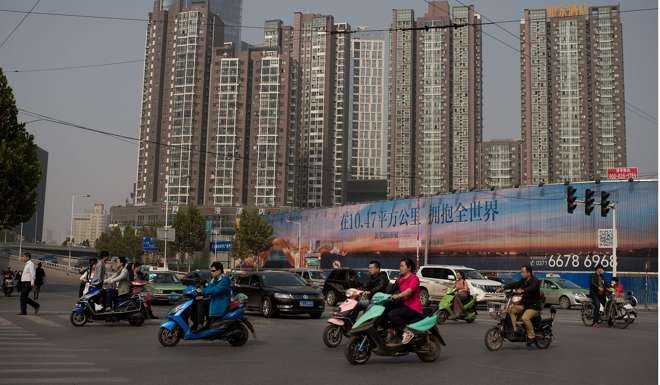
China’s pivot towards credit tightening point to slowdown in 2017
Efforts by Chinese officials to curb excess credit growth and the calm the housing market are likely to be felt in an economic slowdown during 2017, analysts say
It’s a surprise to see China has posted stronger than expected monetary and credit data for last month. But analysts say the jump in new yuan lending has actually masked a drop in broad credit growth and markets should brace for a continued slowdown in credit expansion, including a deeper contraction in mortgage lending, as policymakers shift their focus to containing credit risks from growth concerns.
Chinese banks extended a net 1.22 trillion yuan in local currency loans in September, up 28 per cent from August’s 950 billion yuan and beating consensus forecast of 1 trillion yuan, latest government statistics showed. The strong growth in new yuan loans has helped lift aggregate finance to 1.72 trillion yuan for September, up 17 per cent from the previous month.
However, “the jump in China’s new yuan lending was mostly seasonal and masks a drop in broad credit growth,” said Julian Evans-Pritchard, China economist for Capital Economics.
A breakdown of the data reveals that loans for the household sector continued to accelerate, likely buoyed further by the recent boom in mortgage lending, he said.

But this was offset by slower lending to firms and loans to non-bank financial institutions.
Meanwhile, total social financial (TSF), a measure of broad credit used by the People’s Bank of China, increased to 1.72 trillion yuan in September. But Evans-Pritchard said the TSF figures are “no longer the best guide to credit trends” and should be adjusted for local government bond net issuance, whose share of total credit has increased sharply in recent years.
When including government bonds, the TSF measure suggests broad credit growth slowed to 16.7 per cent year-on-year in September from 16.8 per cent in August, according to Capital Economics estimates.
Moreover, the breakdown of the adjusted TSF indicated that shadow financing continues to suffer from tighter regulations and barely grew at all last month, analysts at the London-based research firm said.
Meanwhile, research by Goldman Sachs analysts draws a similar conclusion.
“While September money and credit data came in above market and our expectations, they were not as loose as in August,” Goldman analysts said in a note on Tuesday.
They estimate TSF growth at 15.9 per cent year-on-year in September, also lower than 16 per cent in August.
There was “incrementally less support for the real economy,” they said.
Goldman analysts expect property market tightening measures to put further downward pressure on construction and overall activity in the target areas.
Likewise, Evans-Pritchard predicted that the pace of lending will cool further going forward.
The PBOC has reportedly ordered banks to slow the pace of mortgage lending amid concerns over overheated property markets.
In the meantime, broader worries about credit risks means further monetary easing is unlikely.
Evans-Pritchard said it will take time for a more cautious policy stance to affect economic growth and the Chinese economy should continue to be supported in the near term by the lagged impact of earlier policy easing.
“However, the slowdown in credit is likely to prove a headwind to growth next year,” Evans-Pritchard said.

